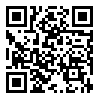Volume 5, Issue 3 (Fall 2018)
jhbmi 2018, 5(3): 348-360 |
Back to browse issues page
Download citation:
BibTeX | RIS | EndNote | Medlars | ProCite | Reference Manager | RefWorks
Send citation to:



BibTeX | RIS | EndNote | Medlars | ProCite | Reference Manager | RefWorks
Send citation to:
Abbasi P, Kiavarz M, Abbasi M. Spatial Analysis and Identification of High Risk Areas of Human Brucellosis by Spatial Autocorrelation Measurement Methods. jhbmi 2018; 5 (3) :348-360
URL: http://jhbmi.ir/article-1-317-en.html
URL: http://jhbmi.ir/article-1-317-en.html
M.Sc. student in GIS, Geo-spatial Information System (GIS) Dept., University College of Omran-Toseeh, Hamedan, Iran.
Abstract: (5540 Views)
Introduction: Brucellosis is one of the most common zoonotic infections, which is considered as a potential public health threat. Geographical information system (GIS) can be a great help to managers and policy makers in the public health field for designing, implementing and monitoring control programs.
Method: In this descriptive cross-sectional study, the global Moran's I was used to determine the type of annual pattern of the disease, local Moran and Getis-Ord G * indices were used to identify the high risk areas and differential Moran's was used to compare the spatial pattern of the disease based on the incidence of annual incidence in the two successive years.
Results: According to the results, during a 7-year period, most of the cases had been located in Malayer County and the least in Asadabad and Tuyserkan counties (central and western areas of the province). The incidence rate of the disease rose from April 2009 to March 2014 and decreased during April 2014 to March 2015. According to the results of global Moran's, the pattern of disease was cluster in all years except for 2012. The clusters and hotspots detected by local Moran's I and G * were located in the southeast of the province. The results of differential Moran's I showed the emergence of new hazardous areas in the province over the study period.
Conclusion: By comparing the spatial pattern of disease in different years, it can be said that the current control programs do not have the required efficacy and need a general overview. The results of this study can be used to identify starting points for future plans and to evaluate their effectiveness.
Method: In this descriptive cross-sectional study, the global Moran's I was used to determine the type of annual pattern of the disease, local Moran and Getis-Ord G * indices were used to identify the high risk areas and differential Moran's was used to compare the spatial pattern of the disease based on the incidence of annual incidence in the two successive years.
Results: According to the results, during a 7-year period, most of the cases had been located in Malayer County and the least in Asadabad and Tuyserkan counties (central and western areas of the province). The incidence rate of the disease rose from April 2009 to March 2014 and decreased during April 2014 to March 2015. According to the results of global Moran's, the pattern of disease was cluster in all years except for 2012. The clusters and hotspots detected by local Moran's I and G * were located in the southeast of the province. The results of differential Moran's I showed the emergence of new hazardous areas in the province over the study period.
Conclusion: By comparing the spatial pattern of disease in different years, it can be said that the current control programs do not have the required efficacy and need a general overview. The results of this study can be used to identify starting points for future plans and to evaluate their effectiveness.
Keywords: Point pattern analysis, Human brucellosis, Hamedan, Global and local Moran’s I, Getis-Ord G*, Differential Moran’s I
Type of Study: Original Article |
Subject:
Health Information Systems
Received: 2018/06/6 | Accepted: 2018/09/1
Received: 2018/06/6 | Accepted: 2018/09/1
Send email to the article author
| Rights and permissions | |
 |
This work is licensed under a Creative Commons Attribution-NonCommercial 4.0 International License. |




